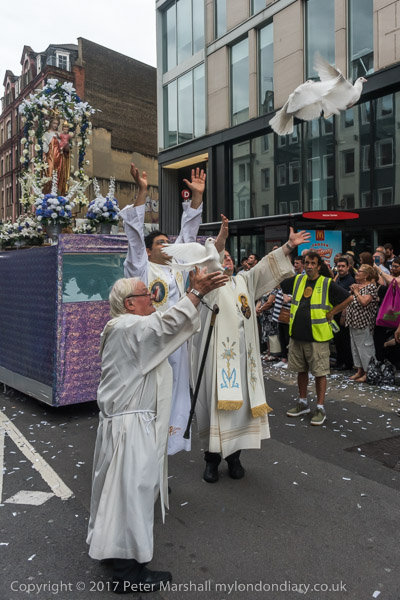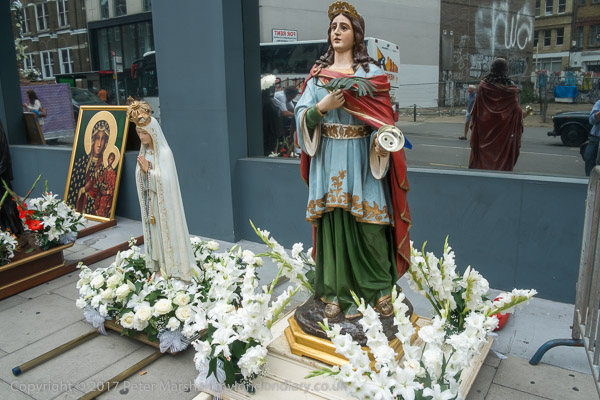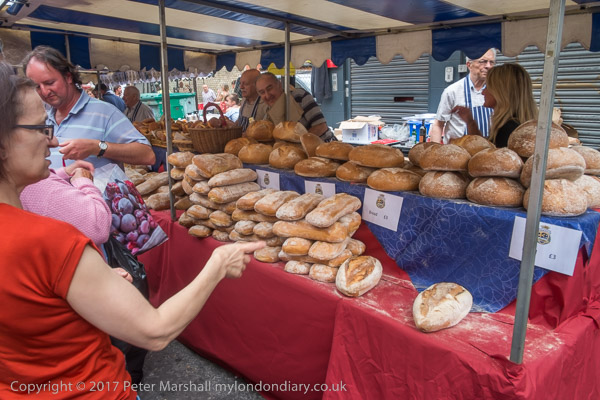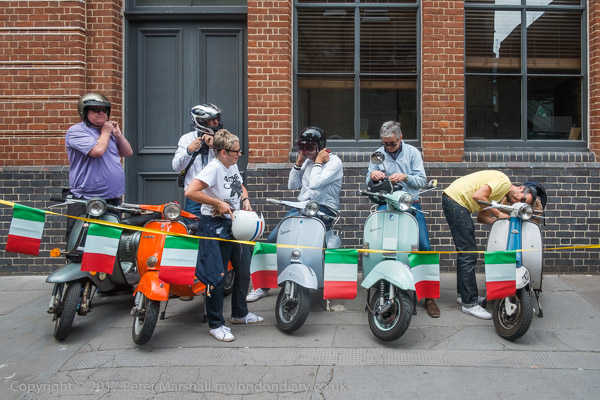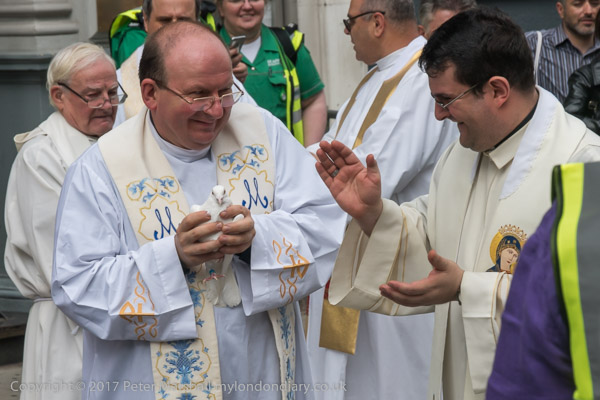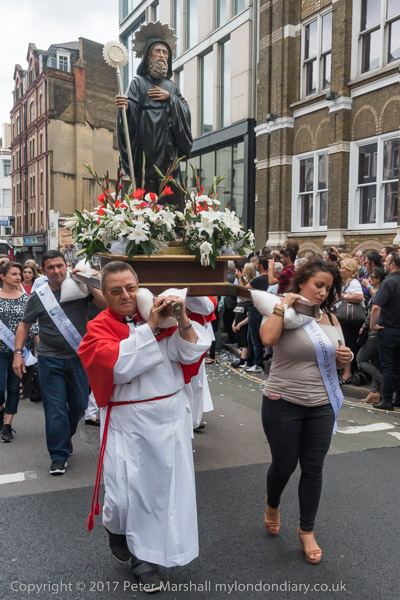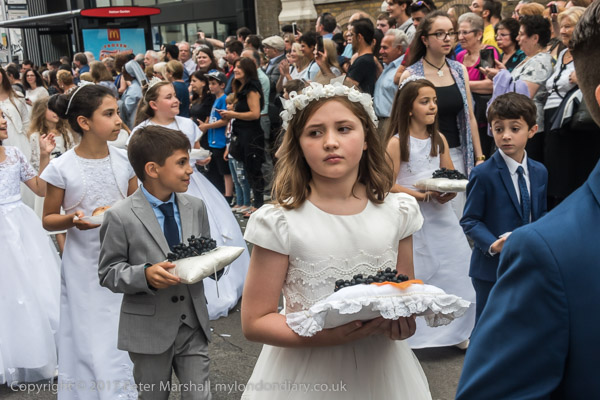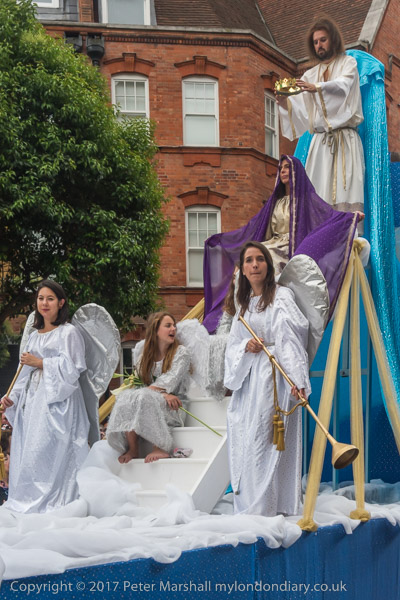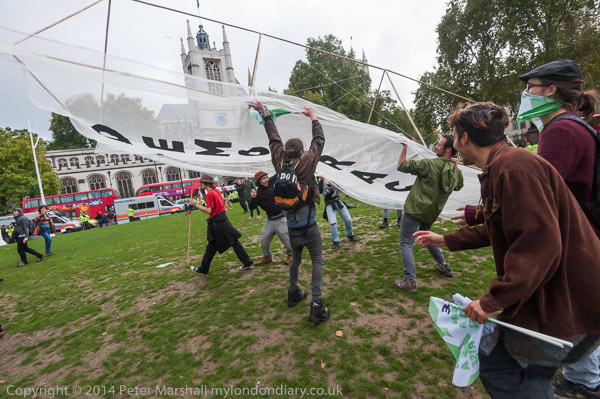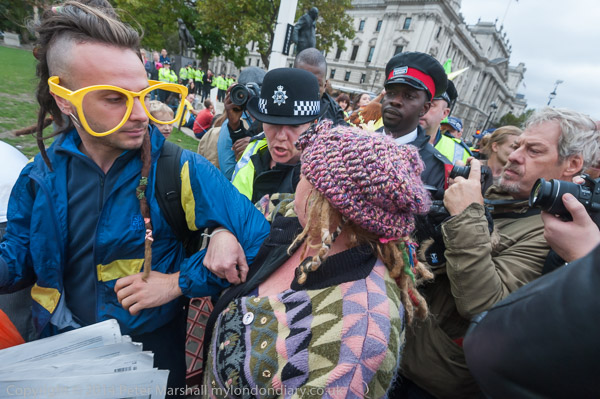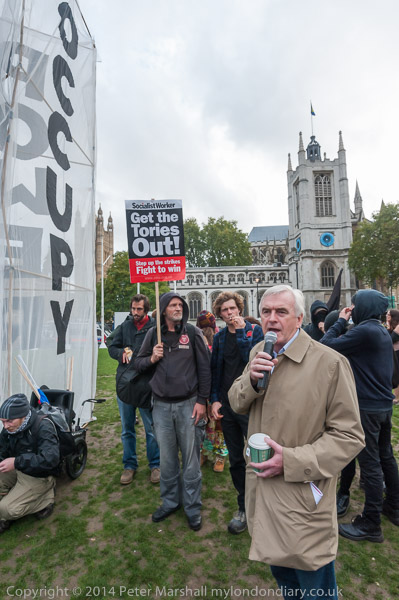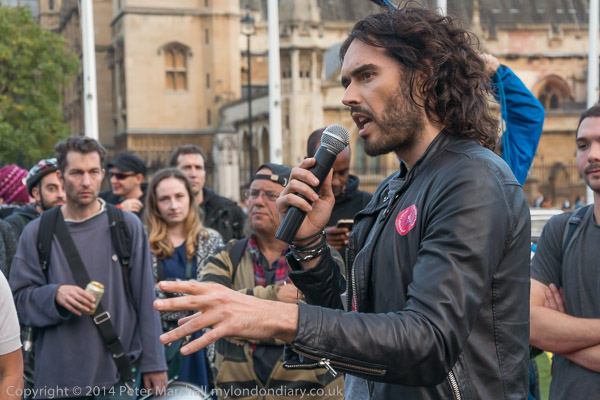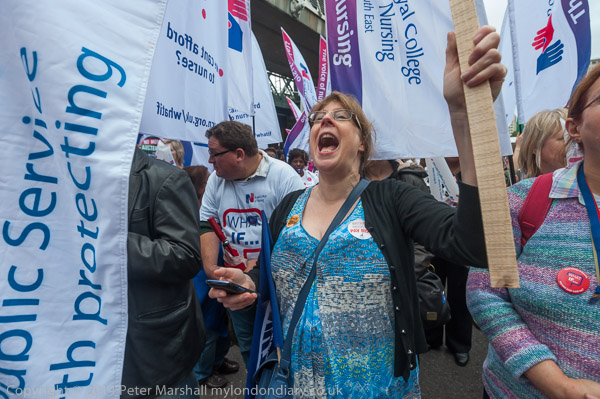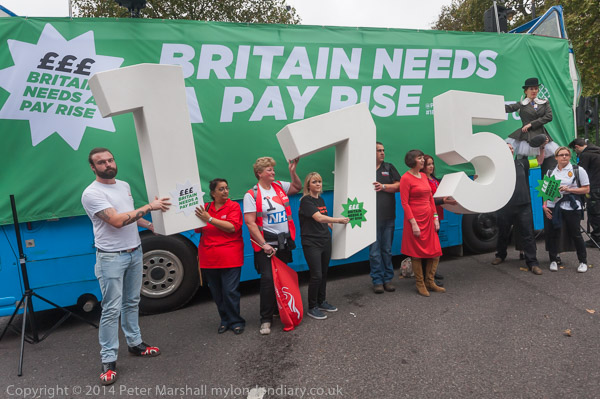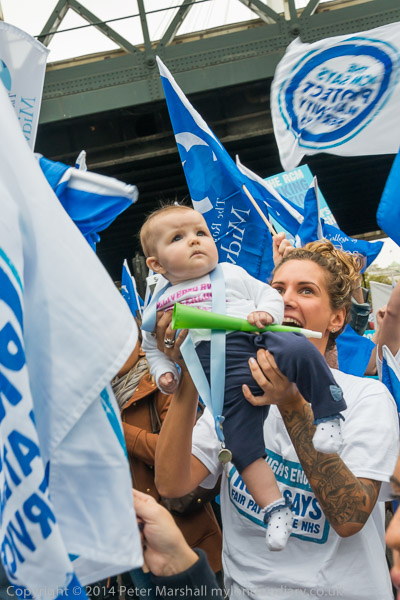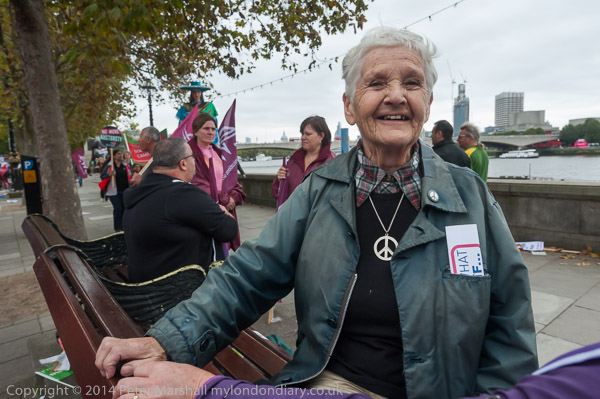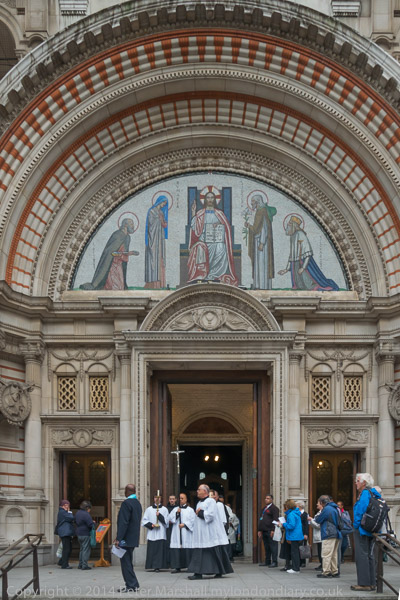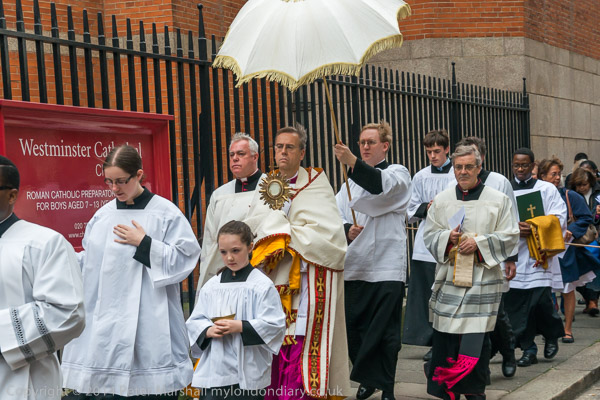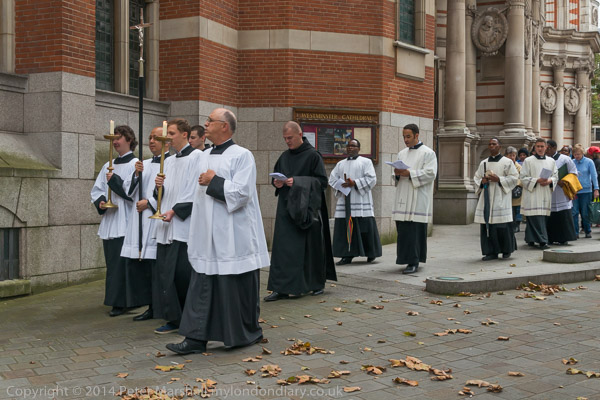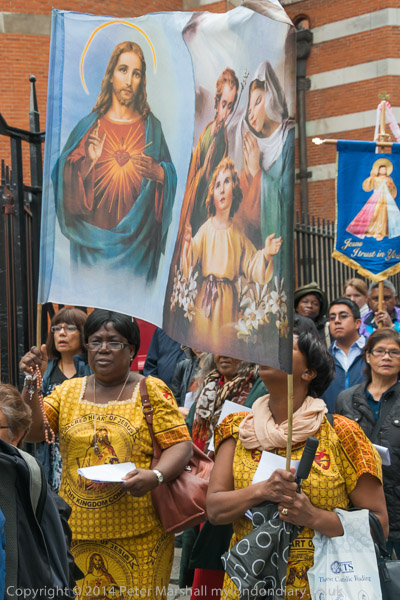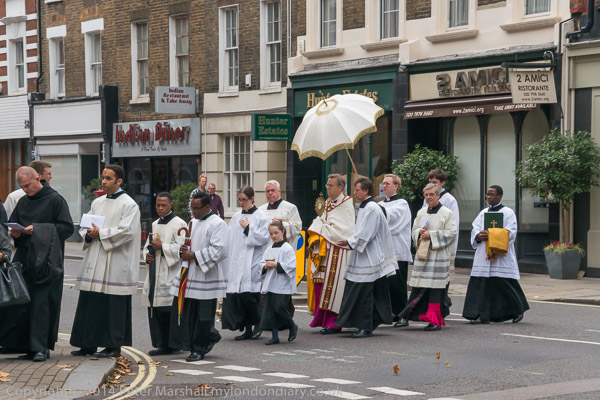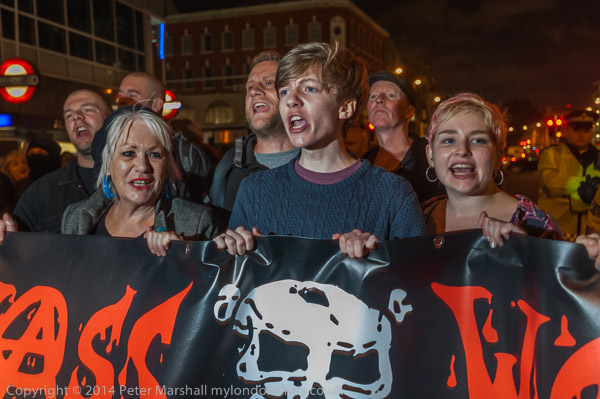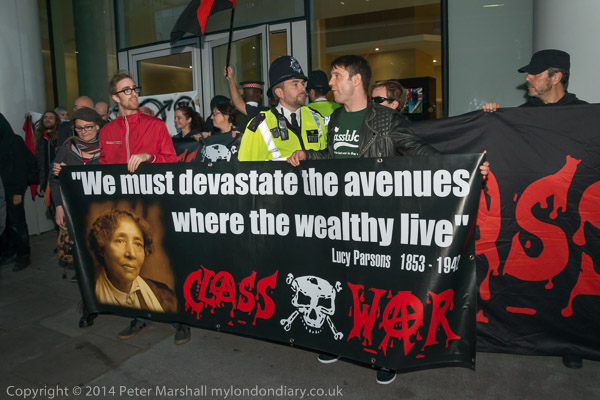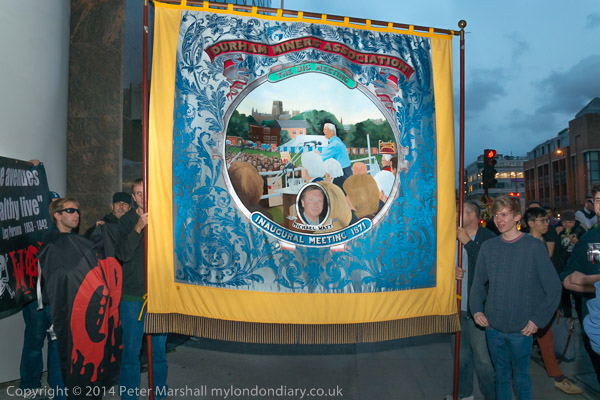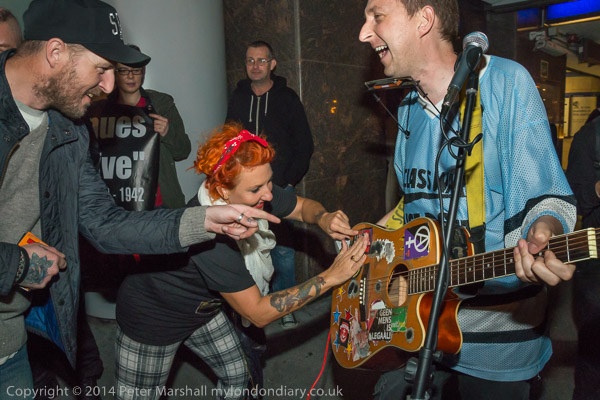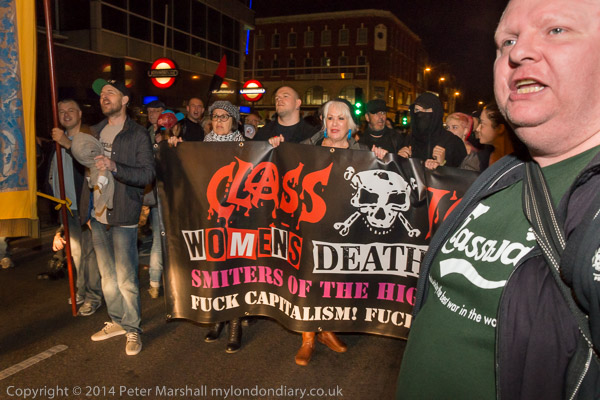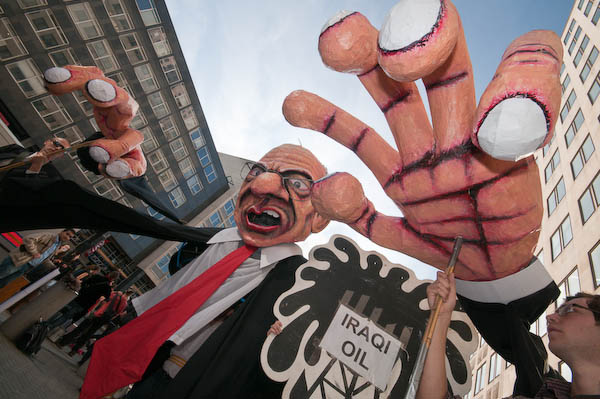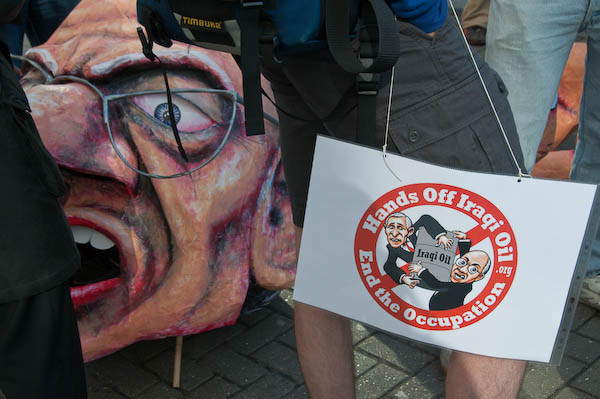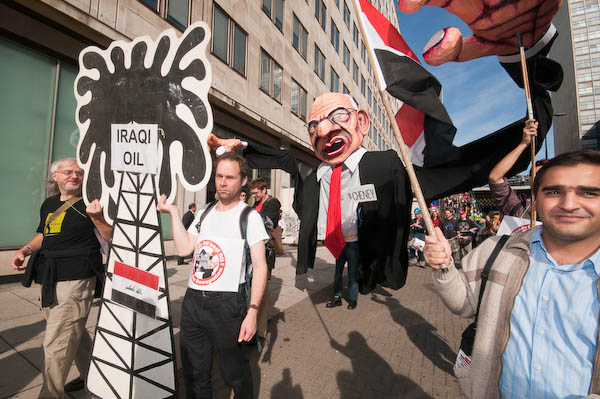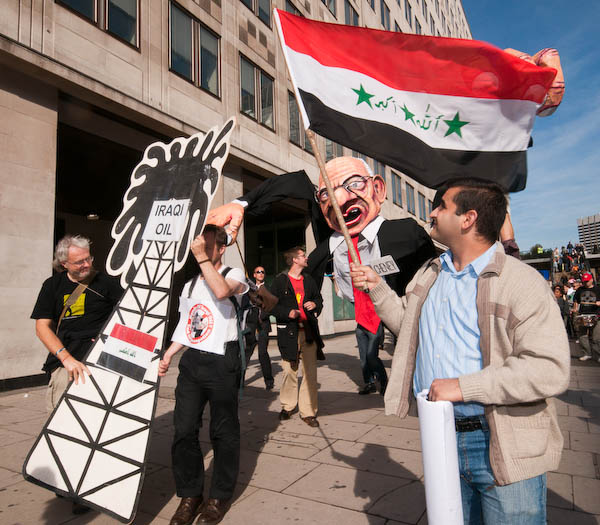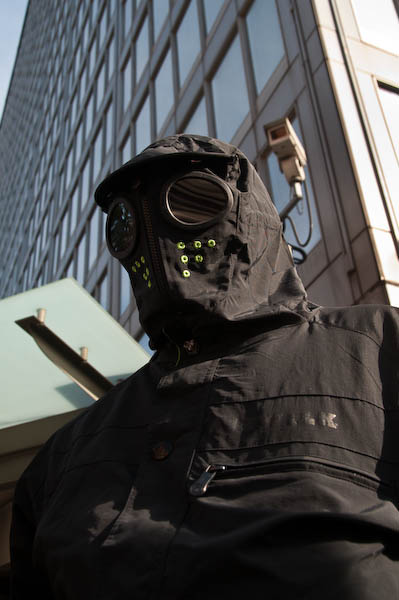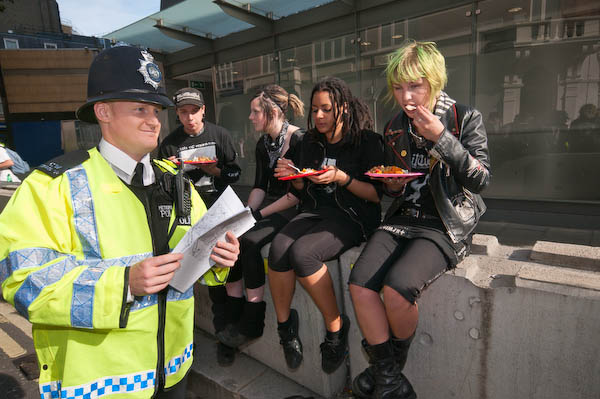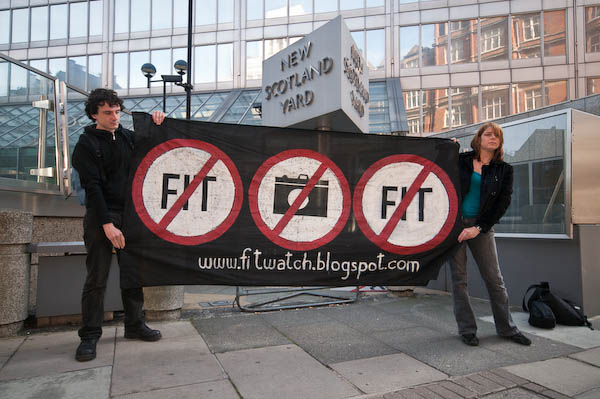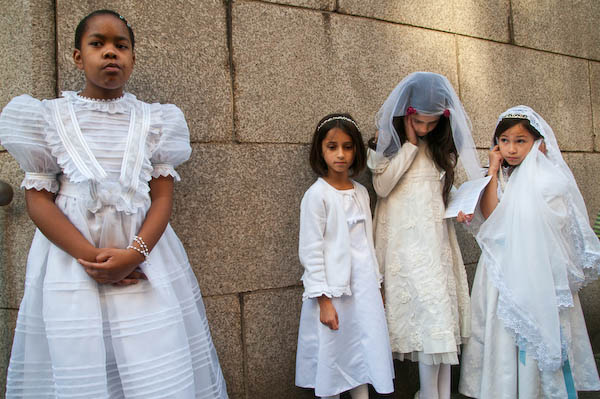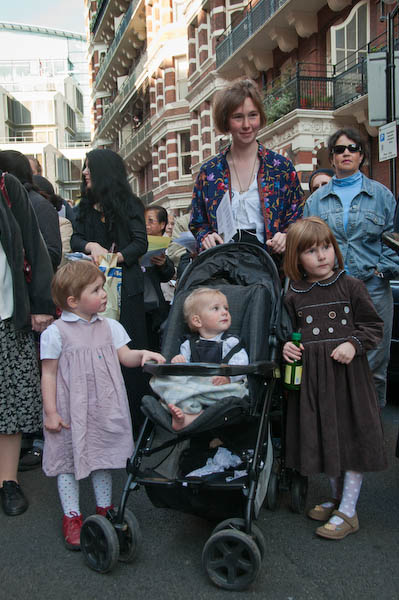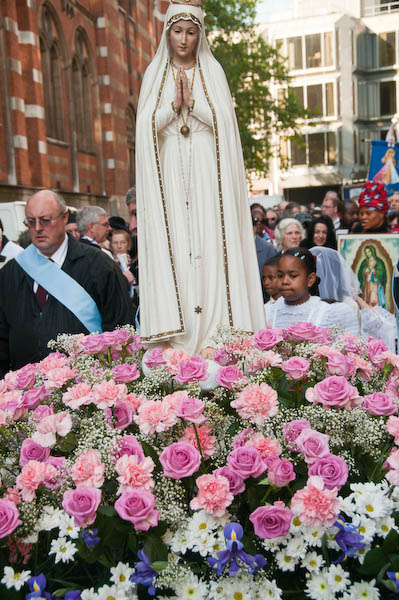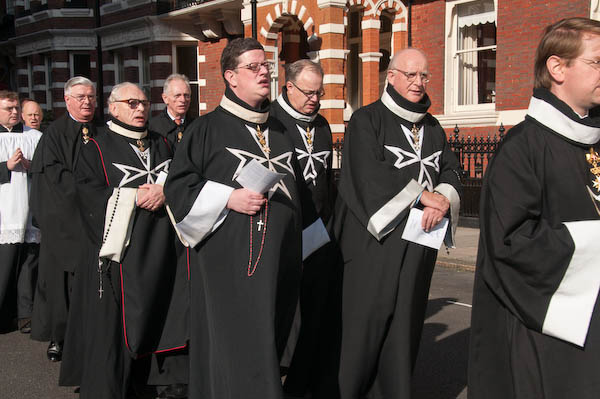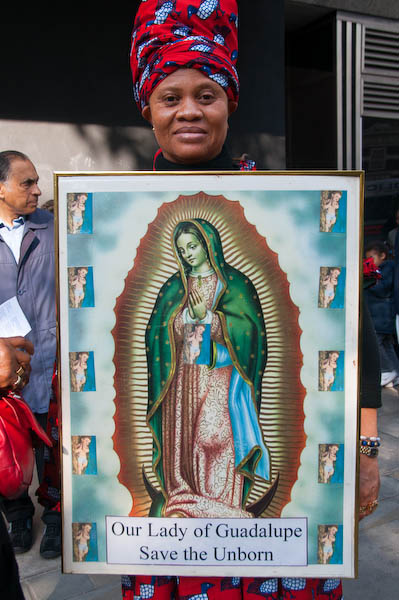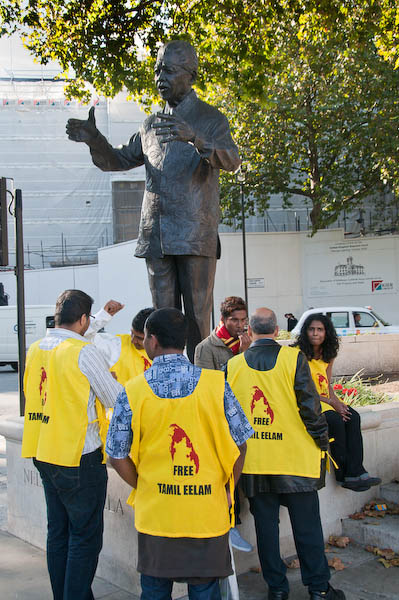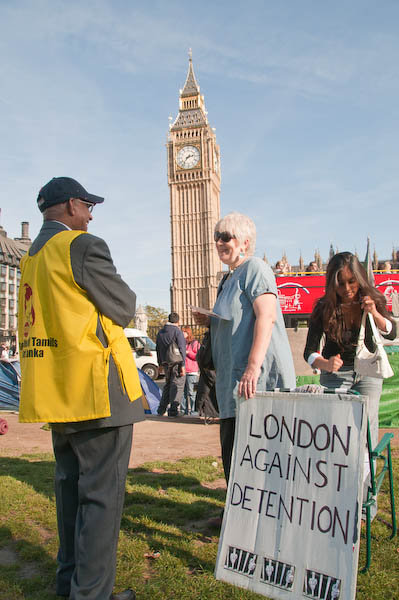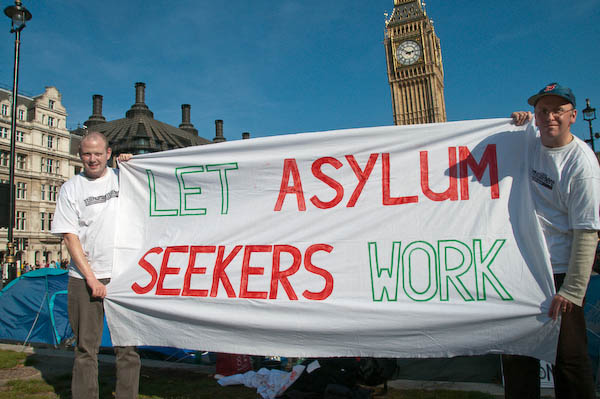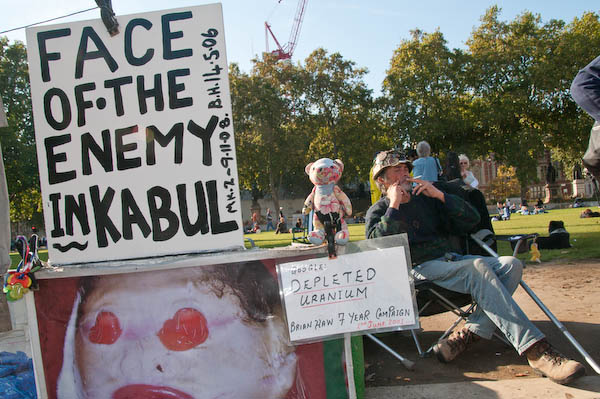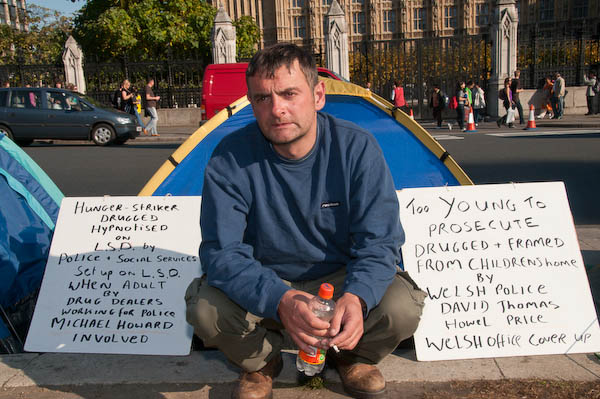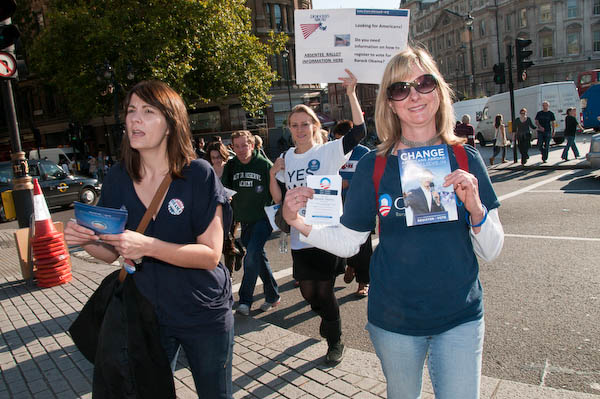Italian Festival & Ritzy Strike: On Sunday 20th July 2014 I spent several hours at the Italian festival in Clerkenwell and photographed the procession around the local streets before rushing off to Brixton where striking cinema workers were holding a protest in front of the Ritzy cinema.
Festival of Our Lady of Mount Carmel – St Peter’s Church, Clerkenwell
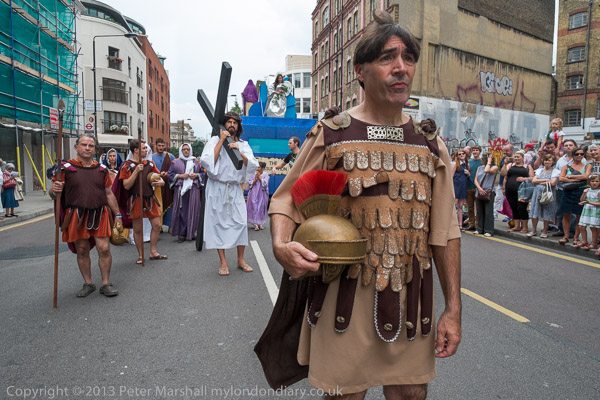
I think I first photographed the procession of Our Lady of Mount Carmel in 1992 – you can see pictures from then and the following year in one of my Flickr albums, Procession in Honour of Our Lady of Mount Carmel.

In 1883 when the event began it was the first Roman Catholic event on English streets for 349 years and required special permission from Queen Victoria, but since then – with a few interruptions for war etc – has taken place every year on the third Sunday in July.
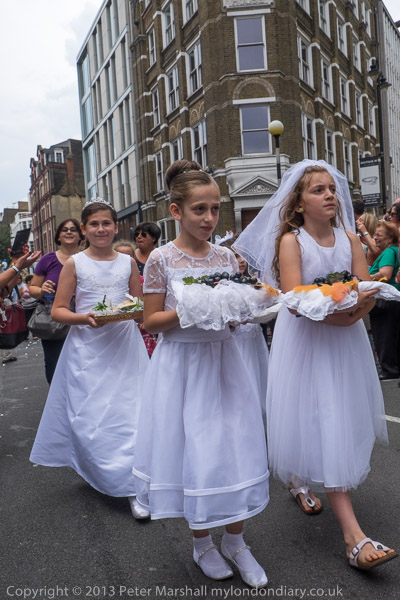
Since then I’ve frequently gone back to the event and taken more photographs, though in more resent years it has become more of a social event for me, meeting up with photographer friends – including one with Italian heritage – and sharing plastic cups of cheap Italian wine.

As well as the procession I’ve always photographed the people at these events and Sunday 20th Jul 2014 was no exception. As well as watching the procession many from the Italian community come from across this country to meet with old friends at the event and enjoy the food, wine, music and dancing in the Sagra in Warner Street.

This year (2025) it is also on 20th July and if you are in London and reading this on the day I post it, if you can get to St Peter;s Church in Clerkenwell (a short walk from Farringdon Station) by 3.30pm you can see what is I think London’s largest annual and certainly most colourful Christian processions.

It is still in my diary, but probably I won’t make it this year, partly because of being tired from photographing another protest calling for an end to the genocide taking place yesterday. But also because last time I went the wine had gone up in price and down in quality. More seriously because I’ve photographed it so many times it is hard to find anything new and not just repeat myself.
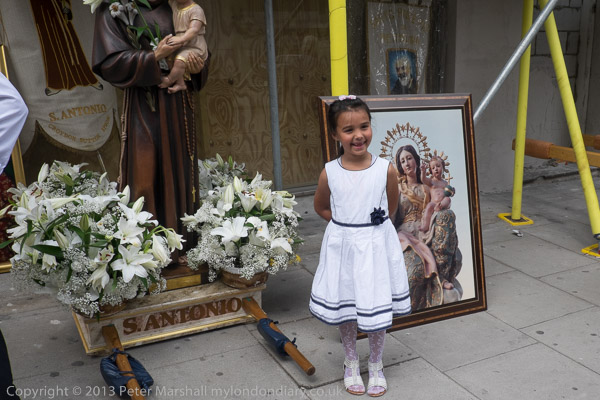
The event in 2014 was, as I noted, the first I’ve attended when there were no white doves released. So, although the other pictures are all from 2014, here is one from the last time I went to the festival in 2019. Pigeons are unpredictable and often look rather strange in flight and I was pleased to get one frame with them all visible.

I usually stayed for an hour or two photographing the people celebrating, but in 2014 I rushed off after the procession to photograph another event.
Much more on My London Diary Festival of Our Lady of Mount Carmel.
Ritzy workers strike for Living Wage – Windrush Square, Brixton,
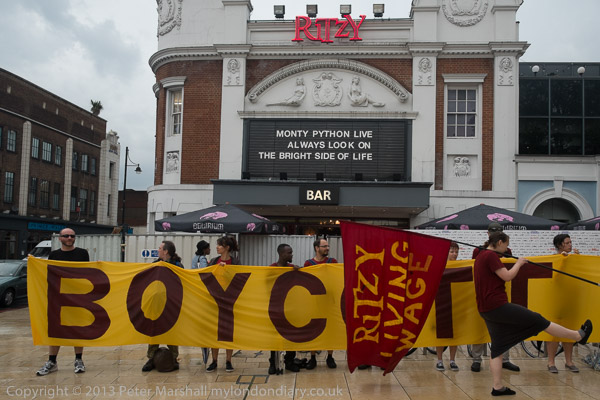
Despite some torrential rain “the Ritzy workers, some soaked to the skin, kept standing behind their long banner across the whole wide frontage of the cinema. Some had umbrellas, others did not, but it was the kind of rain that made umbrellas next to useless.”

For once I had my own umbrella up, holding it while taking pictures but still “enough came through to soak my clothes and my feet were squelching in my shoes.“

The Ritzy is the busiest and most successful art-house cinema in the the UK but was still paying its workers at only 82% of the London Living Wage – not enough to live on in London. Backed by their union, BECTU, they went on strike after negotiations with employers Cineworld failed. The workers say ‘Living Staff – Living Wage.
More at Ritzy workers strike for Living Wage.
Flickr – Facebook – My London Diary – Hull Photos – Lea Valley – Paris
London’s Industrial Heritage – London Photos
All photographs on this page are copyright © Peter Marshall.
Contact me to buy prints or licence to reproduce.
